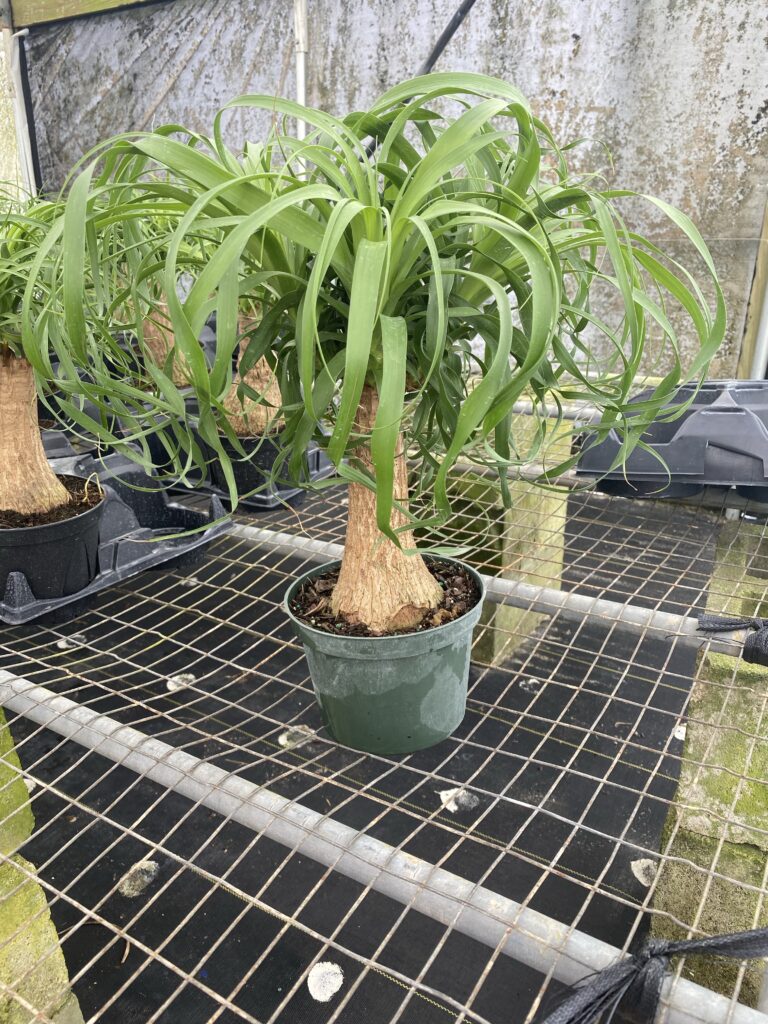
Ponytail palms (Beaucarnea recurvata) are a relatively low-maintenance plant, making them a great choice for both beginners and experienced plant enthusiasts. Shane Tinker Enterprises, Inc. carries 4″, 6″, 10″, and 14″ pot size Ponytail palms.
Here are some key Ponytail Palm care tips.
Light: They thrive in bright, indirect light. They can also tolerate some direct sunlight, but too much direct sun can cause leaf burn. If you’re growing it indoors, a spot near a window with filtered light is ideal.
Watering: Ponytail palms are drought-tolerant and prefer to dry out between waterings. Water thoroughly when the top 1-2 inches of soil feel dry. Overwatering can lead to root rot, so it’s better to err on the side of too little water than too much.
Soil: Use well-draining soil. A mix designed for cacti or succulents works well. Adding perlite or sand to standard potting soil can improve drainage.
Temperature: They prefer warm temperatures, ideally between 60-80°F. They can tolerate cooler temperatures but should be protected from frost and drafts.
Humidity: They adapt well to average household humidity and don’t require extra humidity.
Fertilizing: Feed with a balanced, water-soluble fertilizer once a month during the growing season (spring and summer). Reduce feeding in the fall and winter when the plant’s growth slows down.
Repotting: Ponytail palms grow slowly, so they don’t need frequent repotting. Repot only when the plant becomes root-bound or every 2-3 years.
Pruning: Pruning is minimal. Remove any dead or damaged leaves at the base. The plant naturally sheds older leaves, so don’t worry if some fall off.
Pests and Problems: They’re generally pest-resistant but can occasionally suffer from mealybugs or spider mites. Regularly check the plant for signs of pests and treat as needed. Overwatering can lead to root rot, so always ensure proper drainage.
If you have any questions, or are interested in purchasing, feel free to come by the nursery or give us a call at (352)735-8350. Our inventory is also available to see online.
